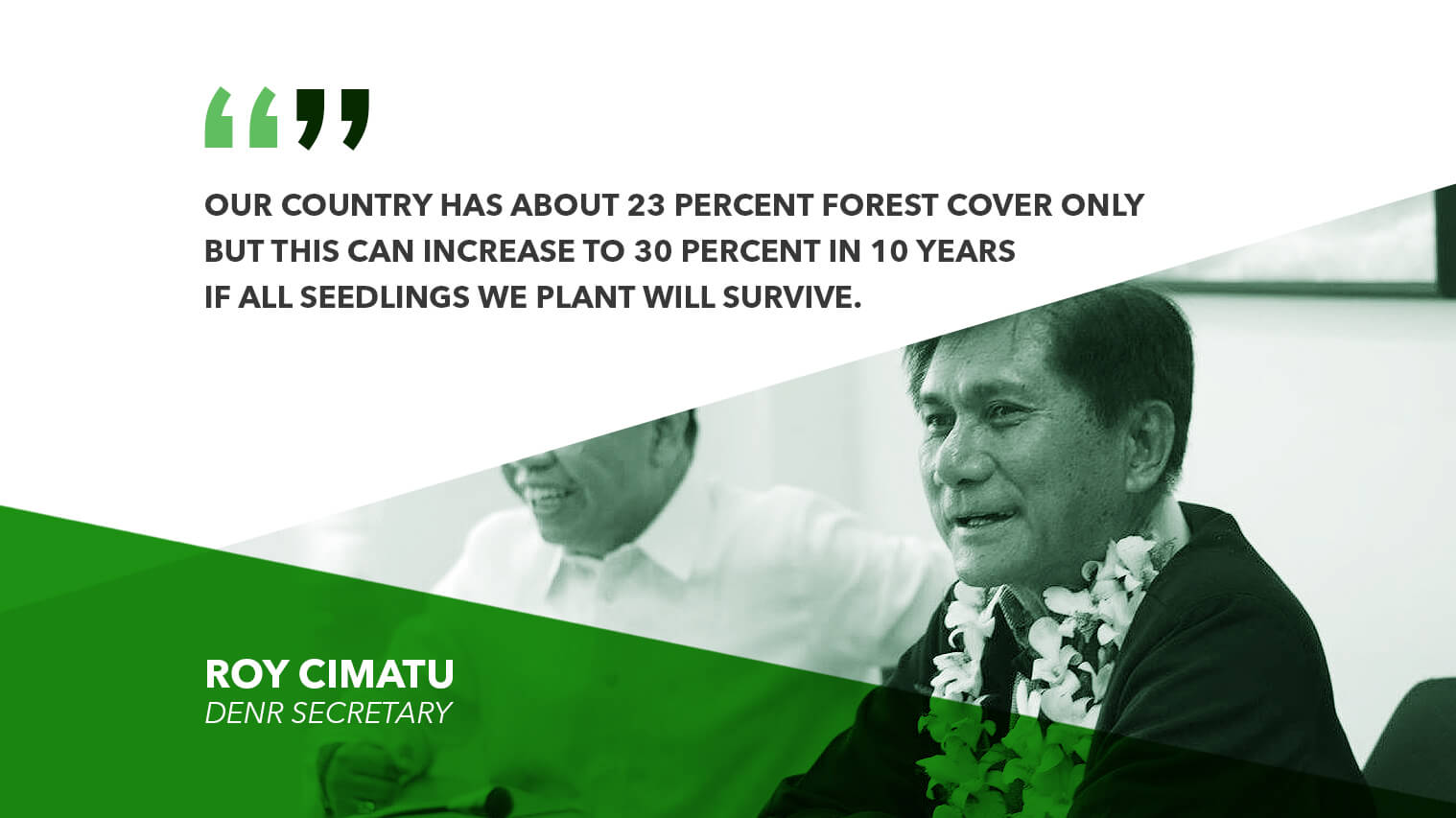The Department of Environment and Natural Resources (DENR) is targeting to raise, as soon as possible, the survival rate of tree seedlings planted under its National Greening Program (NGP), which is the biggest reforestation bid by the government so far.
Such target aims to help fast-track the expansion of the country’s forest cover, which DENR said, consists of natural and man-made forests including forests within wetlands and built-up areas.
“Our country has about 23 percent forest cover only but this can increase to 30 percent in 10 years if all seedlings we plant will survive,” DENR Secretary Roy Cimatu told participants of the 2018 Community-Based Forest Management (CBFM) Practitioners’ Congress in Manila.
Cimatu directed DENR’s Forest Management Bureau to look into ways of raising NGP seedlings’ survival rate.
“I’d like to request DENR’s Ecosystems Research and Development Bureau to identify species best suited to soil in regions,” the environment chief said.
“I’d like to request DENR’s Ecosystems Research and Development Bureau to identify species best suited to soil in regions.”
Responding to Cimatu’s informal survey during the congress, several participants reported that the survival rate of NGP seedlings in respective regions ranges between 50 percent to 80 percent.
“I challenge you to raise the seedlings’ survival rate,” the environment head urged all participants of the congress.
Among the participants were DENR personnel and people’s organizations (PO) members implementing the NGP around the country.
Citing latest available data, DENR reported that the 2015 Philippine forest cover was only about 7.01 million hectares or nearly 24 percent of the country’s total land area of around 30 million hectares.
Forest cover nationwide in the mid-1930s was nearly 18 million hectares, the DENR noted.
Activities that drove forest cover decrease over the years include forest clearing to accommodate increasing agricultural and housing needs, commercial and illegal logging, slash-and-burn practices or “kaingin” and forest fires.
The DENR notes that nationwide reforestation must be intensified so future generations of Filipinos can benefit from forests. The benefits of forests include provision of food, medicine, timber and other goods, sequestration of carbon, as well as hosting and maintenance of wildlife species.
Cimatu said that the “NGP is a chance for us to raise forest cover nationwide.”
“The National Greening Program is a chance for us to raise forest cover nationwide.”
Since the start of the NGP in 2011, the DENR and its partners have planted a total 1.64 billion seedlings on 1.95 million hectares of denuded nationwide.
Cimatu added that with the NGP’s planting area set at only 1.82 million hectares, there is now a 107 percent accomplishment for the program.
“NGP is moving fast,” he noted.
Cimatu said there is a need for further improve the survival rate of NGP seedlings so forest cover nationwide can expand faster.
He said Philippine forest cover is smaller than what other Asian countries have. Cimatu said South Korea’s forest cover grew to about 40 percent at present even if forests were destroyed during the Korean War.
Forest cover in Malaysia and Indonesia are also larger compared to that of the Philippines.
Cimatu called on POs nationwide to further help DENR implement the NGP and care for forests through CBFM, the country’s national strategy for sustainable forest management.
“Let’s all continue to work together as a community of CBFM practitioners,” he said.
The 2018 CBFM Practitioners’ Congress recognized POs nationwide for helping government protect and conserve forests around the country.


